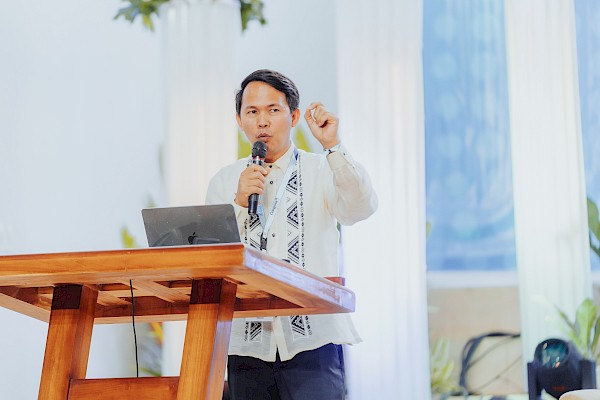Southern Asia-Pacific Division
The official website of the Southern Asia-Pacific Division of the General Conference of Seventh-day Adventists
News
Delegates Draw Inspiration from Adventist History in Asia, Embracing Its Legacy and Mission

The afternoon session of the Division-Wide Sabbath School/Personal Ministries (SS/PM), Nurturing Discipleship Retention/Integrated Evangelism Lifestyle (NDR/IEL), and Children's Ministries (CM) Congress, represented by an overwhelming number of delegations from different organizations and institutions within the Southern Asia-Pacific region, attended an important discussion regarding the pioneering endeavours of the Adventist church and how it thrived through the years through God's provision. Delegates were treated to a journey through the annals of Adventist history in Asia. Pastor Edgar Bryan Tolentino, Director of the Adentist Heritage and Spirit of Prophecy of the Adventist Church in the Southern Asia-Pacific region, took the pulpit to shed light on the remarkable and heroic narrative of Adventism on the continent.
Quoting scriptures such as Isaiah 42:4 and Isaiah 60:9, Tolentino emphasized the prophetic imperative of taking the Adventist message to the islands. Quoted from EGW writings, "The islands will wait". Emphasizing the impending mission to the isolated islands, particularly the southern asia-pacific territory.
Delving into the roots of Adventism in Asia, Tolentino highlighted the visionary efforts of Abraham La Rue, who, at the age of 66, embarked on missionary work in the region.
The presentation traced the history of Adventist missions in Asia, highlighting significant events like the start of work in Indonesia in 1899 under Ralph Waldo Munson's leadership. Who is also a missionary to India, Burma, and Singapore consecutively. George Teasdale's contributions from 1904 and Petra Skadsheim accepted the call to work as a canvasser, resulted to a baptism of 5 souls in 1911 and in 1913 Sabbath School established with 30 members in Batavia and these were underscored as foundational in establishing Adventism in the region.
As Adventism reached the Pearl of the Orient, George A. Irwin, the president of the Adventist Church in Australia, felt an in-depth desire to reach out to the Filipino people and initiated a special request from the General Conference session in the year 1905, laying the groundwork for subsequent endeavors. Despite early successes, challenges persisted, prompting appeals for additional workers like Robert Caldwell, the first missionary canvasser. Later, the McFlhaney couple from the same union conference left for Manila as a complete stranger to the land. The couple worked with Caldwell on publishing work, which was very successful.
Tolentino elucidated on the strategies employed for missionary work in Asia, including tent meetings, canvassing efforts and apprenticeships, Bible institutes, and the establishment of printing presses.
From Sta. Ana Manila, the Adventist message proliferated throughout the Philippines, leading to the formation of the mission headquarters in 1901. However, the journey was not without obstacles, with the presentation noting the sluggish pace of progress due to a dearth of ministers and financial resources.
Tolentino recounted a significant event that occurred in 1912: the founding of the first official Adventist church in the Philippines and L.V. Finster's establishment of the first mission house in 1915. This prompted the spread of Adventism in certain places all over the country.
As the presentation concluded, attendees left with a deeper appreciation for the indomitable spirit of Adventist pioneers and the enduring legacy they forged in Asia. Tolentino's insights served as a reminder of the power of faith and perseverance in the face of adversity.
Tolentino encouraged delegates that history is part of the church’s identity. It is important as it helps the church know its foundation and purpose for existence in its role in spreading the gospel around the world.
"Because it ascribes honor and glory to God, who crowns the diligent missionaries with success and recognizes the sacrifices of the pioneers just to reach souls; It ignites a mission passion to the people; it uses the challenges in mission as a molding pattern for resilience and faith building; and it engraves deeply upon the hearers that the identity of the church is in doing missions."
The Lord in His infinite wisdom, has guided the pioneers and early missionaries to reach even the impossible territories to proclaim the gospel of salvation! This kind of truth always rekindles a spirit of anticipation and excitement to engage in this finishing work. That's why the theme for this year's congress is “Jesus is Coming Soon: Get Involved!”
Cris John Amarante, Negros Occidental Conference
Our Beliefs
Seventh-day Adventist beliefs are meant to permeate your whole life. Growing out of scriptures that paint a compelling portrait of God, you are invited to explore, experience and know the One who desires to make us whole.